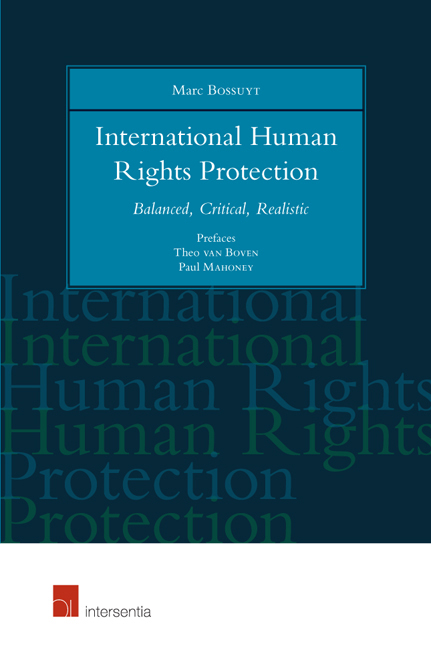Book contents
- Frontmatter
- Dedication
- Preface: A Lifetime of Fidelity and Participation
- Preface: A Penetrating and Salutary Analysis of the European System of Human Rights Protection
- Introduction
- Contents
- Epigraph
- PART ONE International Protection of Human Rights in General
- A The Normative Framework
- B The Institutional Framework
- Chapter V The UN Charter-Based Human Rights Bodies
- Chapter VI The UN Human Rights Treaty Bodies
- Chapter VII Regional Systems of Protection of Human Rights
- PART TWO Specific Human Rights Protection
- Annex: At the Crossroads of Law and Politics
- Bibliographies
- About the Author
Chapter V - The UN Charter-Based Human Rights Bodies
from B - The Institutional Framework
Published online by Cambridge University Press: 25 September 2018
- Frontmatter
- Dedication
- Preface: A Lifetime of Fidelity and Participation
- Preface: A Penetrating and Salutary Analysis of the European System of Human Rights Protection
- Introduction
- Contents
- Epigraph
- PART ONE International Protection of Human Rights in General
- A The Normative Framework
- B The Institutional Framework
- Chapter V The UN Charter-Based Human Rights Bodies
- Chapter VI The UN Human Rights Treaty Bodies
- Chapter VII Regional Systems of Protection of Human Rights
- PART TWO Specific Human Rights Protection
- Annex: At the Crossroads of Law and Politics
- Bibliographies
- About the Author
Summary
The principal organ to deal with human rights within the Organisation of the United Nations, the UN Commission on Human Rights, was set up in 1946. It was one of the eight functional commissions of the UN Economic and Social Council (ECOSOC), itself consisting of 54 States. The UN Commission on Human Rights was oft en criticised, mainly for its so-called “politicisation”. That organ has nevertheless succeeded in adopting an impressive number of international human rights instruments and a great variety of procedures enabling the international community to exercise pressure on States to improve their human rights record. It is precisely because those instruments have been adopted by that political body that the norms contained therein are universally recognised as the standards of reference of human rights everywhere in the world.
A first reform in 1990 led to the enlargement of the Commission (since 1992) from 43 to 53 members (ten additional members from Africa, Asia and Latin America) and to the possibility of convening special sessions. After the Vienna Conference on Human Rights in June 1993, the mandate of a UN High Commissioner for Human Rights was established by the General Assembly in its resolution 48/141 of 20 December 1993.
A second reform took place in 1999–2000 modifying the confidential procedure to examine communications on human rights violations by requesting the Working Group on communications of the Sub-Commission on the Promotion and the Protection of Human Rights to report directly to the Commission. Moreover, the Sub-Commission could not adopt anymore country specific resolutions and the meeting time of its annual session was reduced from four to three weeks.
A third reform replaced the Commission with a Human Rights Council, established by the General Assembly in its resolution 60/251 of 15 March 2006. That resolution was adopted by 170 votes to four (Israel, Marshall Islands, Palau and USA) with three abstentions (Belarus, Iran and Venezuela). The Human Rights Council consists of 47 States, elected by secret ballot by the majority of the members of the General Assembly. They serve for a period of three years and shall not be eligible for immediate re-election after two consecutive terms.
- Type
- Chapter
- Information
- International Human Rights ProtectionBalanced, Critical, Realistic, pp. 59 - 66Publisher: IntersentiaPrint publication year: 2016



